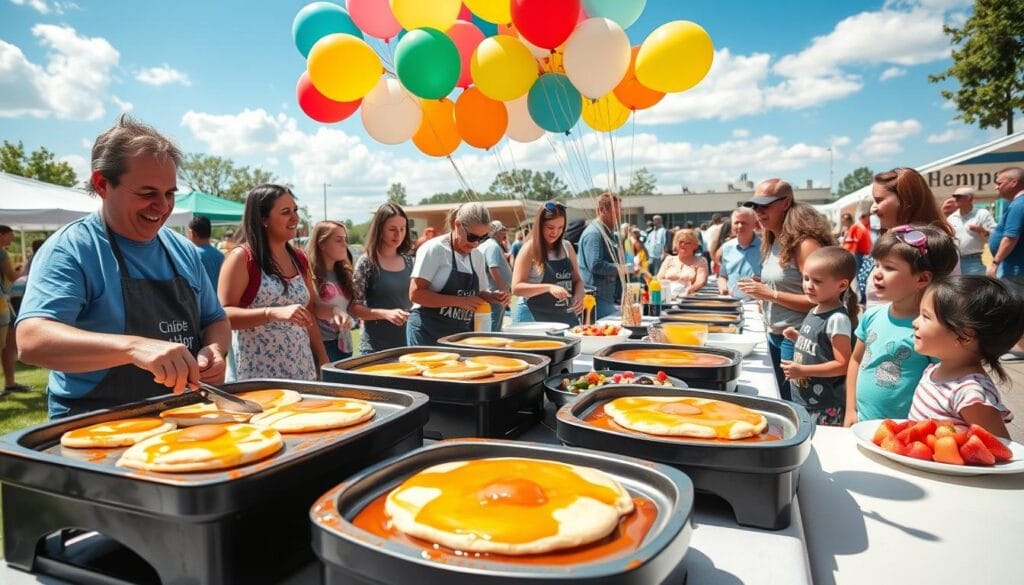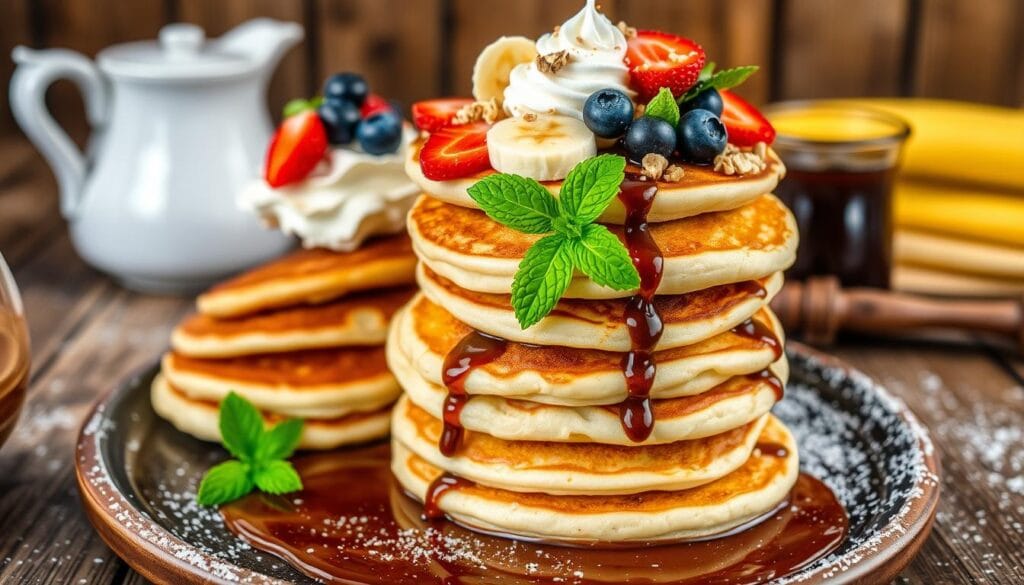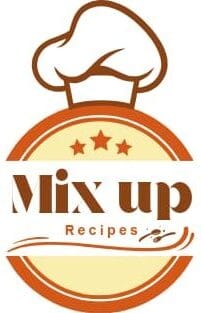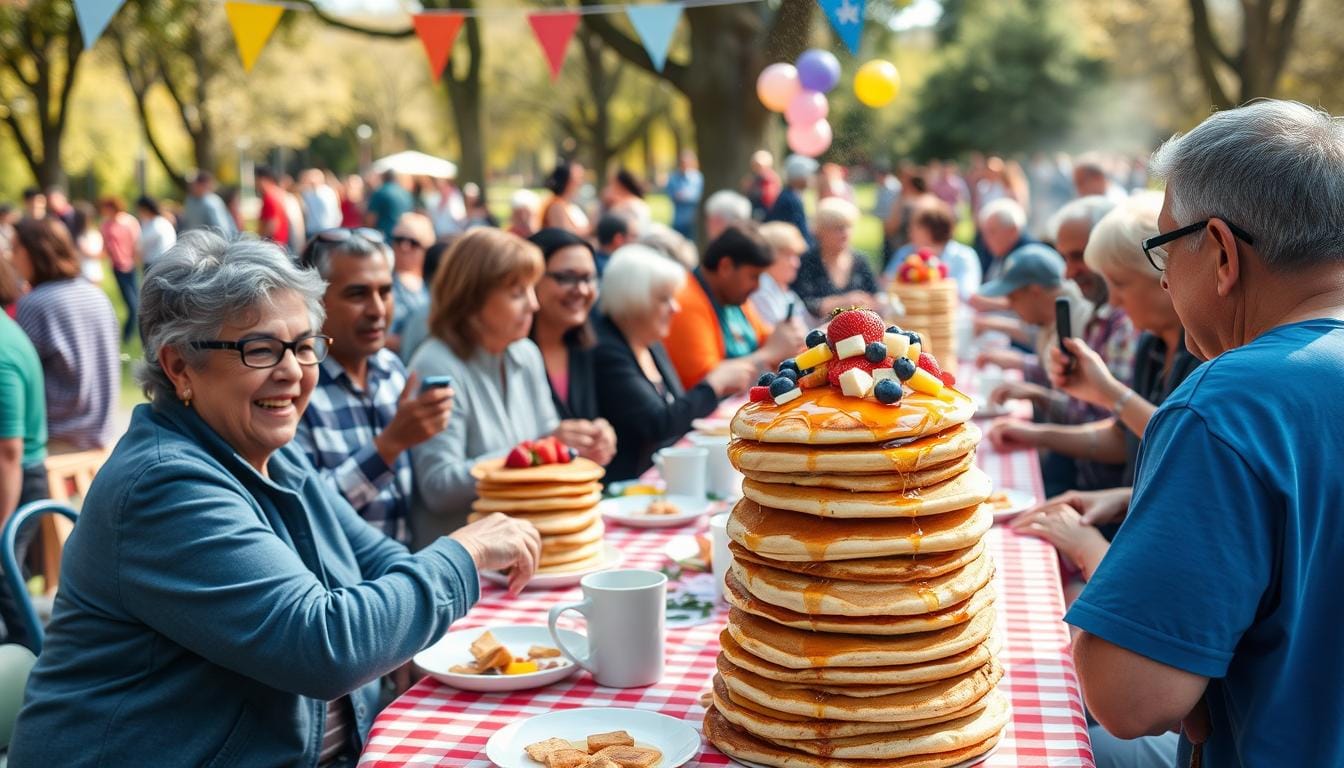The smell of pancakes fills the air, reminding us of warm community gatherings. There is more to CMS pancake breakfasts than just food. They’re about connection, tradition, and helping local communities.
There is something unique for everyone, regardless of your level of experience volunteering at these events. These gatherings support local causes and create lasting memories. The CMS pancake breakfast is a beloved tradition in the United States.
Picture yourself in a lively venue, surrounded by laughter and the scent of maple syrup. These breakfasts unite people of all ages and backgrounds. By joining, you help strengthen community ties.
From its humble beginnings to today, the CMS pancake breakfast has grown. Schools, churches, and local groups have turned these events into powerful gatherings. They offer hope, support, and unity, beyond just pancakes.
Are you ready to explore the world of community pancake breakfasts? Let’s discover the heartwarming tradition that brings people together, one plate at a time.
Table of Contents
The History and Evolution of Community Pancake Traditions
Pancake recipes have deep roots in American community gatherings, dating back to the early 20th century. These beloved breakfast events started as simple social connections in rural communities. They brought neighbors together through shared meals and warm hospitality.
Over the decades, community traditions around pancake breakfasts have changed a lot. What began as local church and school fundraisers has grown into sophisticated social events. Now, they use modern content management systems for organization and promotion.
Origins of Rural America Gatherings
In the early 1900s, rural communities used pancake breakfasts as key social networking chances. These gatherings had many purposes:
- Raising funds for local organizations
- Strengthening neighborhood connections
- Celebrating seasonal changes and harvest
- Supporting community infrastructure projects
Modern Digital Age Adaptations
Today’s pancake breakfast events have adopted technology, using online platforms to plan and attract more people. Digital tools help organizers:
- Create online event registrations
- Share interactive menu options
- Promote events through social media
- Coordinate volunteer schedules
Impact on Local Communities
These breakfast gatherings are still powerful for community building. They continue to bring people together, support local causes, and preserve cherished social traditions. By adapting to changing times while keeping core values, pancake breakfasts remain a beloved American community ritual.
Essential Ingredients for Perfect Pancakes
Starting with the right pancake ingredients is key to making great breakfast dishes. High-quality ingredients can turn your brunch menus into something special. They make your pancake recipe stand out.
The base of great pancakes includes these important ingredients:
- All-purpose flour (100% in classic recipes)
- Fresh whole milk (62.35% of batter composition)
- Large eggs (combining 41.63% egg whites and yolks)
- Granulated sugar (5.82% of the total mixture)
- Baking powder for rising
- Pinch of salt
Here are some tips for mixing pancake ingredients:
- Use room-temperature eggs for a smoother batter
- Sift dry ingredients to prevent lumps
- Avoid overmixing to maintain a light texture
For different diets, try gluten-free 1-to-1 mixes or unsweetened milk alternatives. Your pancakes can be healthier while still tasting great.
Here’s what you’ll find in a typical pancake:
- 494 calories
- 65g carbohydrates
- 15g protein
- 19g fat
Mastering these pancake ingredients will make your breakfast dishes a hit at any brunch.
Mastering the Art of Pancake Preparation
Getting great at making pancakes takes skill, the right kitchen tools, and knowing how to cook. Whether you’re cooking at home or hosting a big breakfast, learning how to make pancakes well can make your cooking better.
Mixing Techniques for Fluffy Results
To make pancakes light and fluffy, you need to mix them right. Here are some key tips:
- Sift dry ingredients to prevent lumps
- Mix ingredients gradually: dry ingredients first, then wet
- Rest batter for 30-60 minutes before cooking
- Use whole milk for enhanced fluffiness
Temperature Control Guidelines
When making pancakes, it’s important to maintain the proper temperature. Your griddle or skillet should be at the perfect heat:
| Temperature Range | Cooking Result |
|---|---|
| 350-375°F (175-190°C) | Perfect golden-brown pancakes |
| Below 325°F | Pale, undercooked pancakes |
| Above 400°F | Burnt exterior, raw interior |
Professional Flipping Methods
Pancake flipping is an art. Before flipping, use a thin, broad spatula to wait for bubbles to form. It takes practice to get perfect!
Pro tip: When pancakes are cooking, avoid pressing down on them. Doing so may cause them to lose their fluffy texture.
Planning Your CMS Pancake Breakfast
Planning a community pancake breakfast is all about strategy and preparation. It’s a chance to engage with your community and raise funds. A simple meal can become a powerful event.

Start by picking the right date and time. The CMS Pancake Breakfast is on January 25, 2025, from 9 a.m. to 11 a.m. It offers sessions for everyone, fitting into different schedules.
Key Planning Considerations
- Choose flexible event times: Early Bird Registration, Peak Breakfast Service, and Community Mingling periods
- Set appropriate ticket prices: $8 for adults, $5 for children
- Develop a diverse menu with inclusive dietary options
- Recruit and organize volunteer teams
Volunteer Management
| Volunteer Roles | Shift Duration | Available Dates |
|---|---|---|
| Cooking | 2-4 hours | January 25, 2025 |
| Serving | 2-4 hours | September 7, 2025 |
| Setup/Cleanup | 2-4 hours | Both dates |
Your community activities can have a big impact. This pancake breakfast supports local schools. It raises funds and offers students chances to help through food donations and coin wars.
Essential Equipment Checklist
- Commercial griddles
- Professional spatulas
- Large mixing bowls
- Precision whisks
- Pancake dispensers
With careful planning and community focus, your pancake breakfast can be unforgettable. It will unite people and support local causes.
Equipment and Setup Requirements for Large Events
The proper equipment and careful planning are essential for organizing a successful neighborhood pancake breakfast. Your setup is the key to a successful event. A successful event depends on knowing the necessary tools and tactics.
Using hospitality technology can be very helpful for a big pancake event. Restaurant management software can organize resources, track inventory, and manage volunteers well.
Essential Kitchen Equipment
- Commercial-grade electric griddles
- High-capacity mixing bowls
- Industrial spatulas and flipping tools
- Multiple cooking stations
- Warming trays for maintaining food temperature
Serving Station Organization
Creating an efficient serving area is key for big crowds. Design your stations for easy flow, ensuring quick access to pancakes, toppings, and drinks.
- Use marked stations for different menu items
- Implement a logical queuing system
- Provide separate areas for toppings and condiments
Safety and Sanitation Setup
Food safety is a top priority. Set up handwashing stations and make sure all volunteers know how to handle food safely.
- Install hand-sanitizing stations
- Provide disposable gloves
- Use color-coded cutting boards
- Maintain proper food temperature zones
With the right tools and planning, your community pancake breakfast will be a hit. Everyone will remember the occasion.
Creative Topping and Syrup Combinations
Make your breakfast special with exciting pancake toppings. The right maple syrup toppings can make simple pancakes unforgettable.

Trying different maple syrup options can add a lot of flavor to your pancakes. Here are some great combinations to try:
- Classic Maple Pairings
- Grade A Dark Color Syrup with toasted pecans
- Grade A Golden Color Syrup with fresh blueberries
- Innovative Breakfast Ideas
- Caramelized banana slices
- Crumbled bacon bits
- Candied walnuts
Your pancake toppings can be sweet or savory, pleasing every taste. Combining flavors and textures to create a breakfast that people will remember is the key.
| Topping Category | Flavor Profile | Recommended Syrup |
|---|---|---|
| Fruit-Based | Fresh Berries | Light Golden Maple Syrup |
| Nutty | Toasted Almonds | Dark Robust Maple Syrup |
| Savory | Crispy Bacon Crumbles | Amber Maple Syrup |
Don’t be afraid to get creative with pancake toppings. Try new combinations to find your favorite breakfast dish.
Volunteer Coordination and Team Management
Running a great CMS pancake breakfast needs good volunteer coordination and team management. It’s all about getting the right people and organizing them well. This makes your event run smoothly.
To get community involvement right, you need a diverse and motivated team. Look for people with a variety of backgrounds and abilities. They should help with all parts of the event.
Recruiting Effective Teams
To find the best volunteers for your pancake breakfast, try these tips:
- Get in touch with local groups and schools
- Advertise on social media
- Make your volunteer ads interesting
- Give them something in return, like free food or credits
Task Assignment Strategies
Assigning tasks is key to good volunteer coordination. Divide the work into specific roles:
- Kitchen prep team
- Cooking station helpers
- Serving and plating crew
- Clean-up and sanitation team
- Guest reception and hospitality group
Communication Protocols
Make sure everyone can talk easily to each other. Use group messaging apps, create a volunteer guide, and hold training sessions. This helps everyone know their job.
Tip: Have a quick meeting with volunteers before the event. It helps build team spirit and makes sure everyone knows what to do.
Scaling Recipes for Community Events
Preparing for big events like pancake breakfasts means scaling recipes is key. Knowing the right methods can turn meal planning into a breeze. It’s all about efficiency and smooth execution.
Scaling recipes needs exact math. Small changes can make a big difference. Chefs suggest these strategies:
- Calculate ingredient ratios precisely
- Use commercial-grade kitchen equipment
- Test scaled recipes before the event
- Prepare ingredients in advance
When making more pancakes, keep the ingredient ratios the same. One cup of flour might need 2-3 cups for big groups. Important scaling tips include:
- Eggs: 1-2 eggs per cup of flour
- Milk: Increase by 1/4 to 1/2 cup per flour cup
- Mixing: Use large stand mixers or commercial mixing bowls
| Recipe Size | Serving Capacity | Equipment Needed |
|---|---|---|
| Standard Home Recipe | 4-6 people | Regular mixing bowl |
| Community Event Recipe | 50-100 people | Commercial mixer, multiple griddles |
| Large Nonprofit Gala | 200-500 people | Industrial kitchen, multiple cooking stations |
Pro tip: Always test your scaled recipe before the big day. This ensures quality and taste. Prep work and planning are crucial for success in large-scale cooking.
Dietary Accommodations and Alternative Options
When planning a community pancake breakfast, think about different dietary needs. You can make your event welcoming and tasty by offering gluten-free and vegan pancakes. In this manner, regardless of dietary constraints, everyone may enjoy breakfast.
- Create gluten-free options using alternative flours
- Develop vegan pancake recipes
- Provide clear ingredient labeling
- Offer multiple topping choices
Using gluten-free flour can change your breakfast menu:
| Flour Type | Flavor Profile | Nutritional Benefit |
|---|---|---|
| Almond Flour | Nutty, rich | High protein |
| Coconut Flour | Slightly sweet | Low carbohydrate |
| Rice Flour | Neutral | Easy to digest |
For vegan pancakes, try using flax eggs or chia seed mixtures instead of eggs. For dairy-free pancakes, use plant-based milk such as soy, almond, or oat milk.
To make your pancake breakfast inclusive, label foods clearly and have staff ready to answer questions. This way, guests with dietary restrictions will feel included and appreciated.
Marketing and Promoting Your Breakfast Event
To market your CMS pancake breakfast well, you need a smart plan. This plan should mix online and offline efforts. Your hard work can turn a simple breakfast into a big hit in your community.
Social Media Promotion Tactics
The key to spreading the word is social media. Make content that shows what your breakfast is all about. Here’s a digital plan to follow:
- Create dedicated event pages on Facebook and Instagram
- Share behind-the-scenes preparation photos
- Use local hashtags to increase community visibility
- Encourage followers to share event details
Community Outreach Methods
But social media isn’t everything. You also need to reach out locally. Here’s how:
- Contact local schools and community centers
- Partner with neighborhood associations
- Distribute eye-catching printed flyers
- Engage local media for potential event coverage
Strategic Promotion Timing
| Timeline | Marketing Action |
|---|---|
| 4 Weeks Before | Initial event announcement |
| 2 Weeks Before | Intensive social media campaign |
| 1 Week Before | Daily reminder posts |
| Day Before | Final call-to-action promotions |
With these strategies, you’ll get people excited and coming to your CMS pancake breakfast. It will be a day to remember for your community.
Conclusion
There is more to community gatherings like the CMS pancake breakfast than just food. They bring people together and support important causes. By joining in, you help build stronger local connections and support education.
The beauty of pancake breakfasts is how they unite people. They offer food for all and show the power of community. Your help makes a real difference in your area, showing that together, we can change things for the better.
Going to or helping with these events is more than just eating. It’s about supporting local traditions and education. The success of these breakfasts creates lasting memories and bonds.
Every pancake served is a chance to make a difference. Whether you’re helping out, attending, or organizing, your role is vital. It keeps these community traditions alive and creates special moments for everyone.

